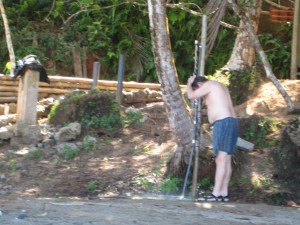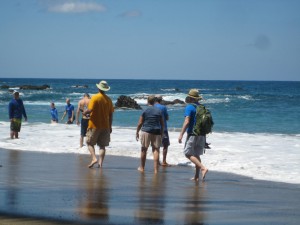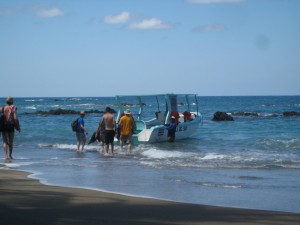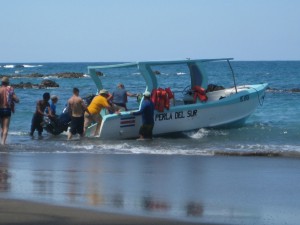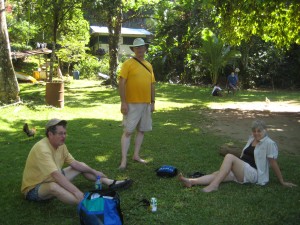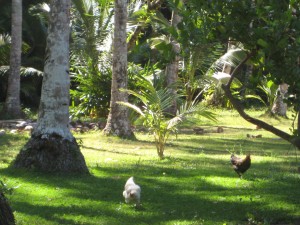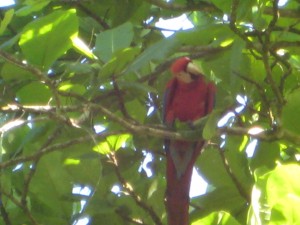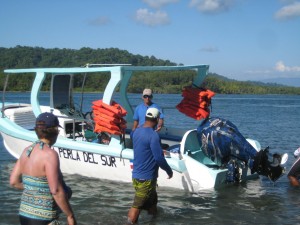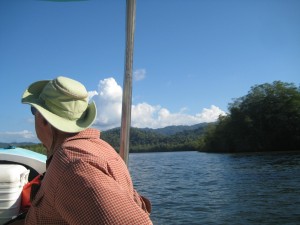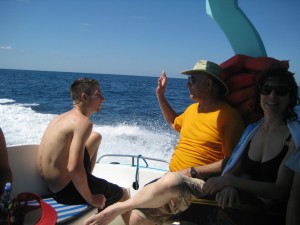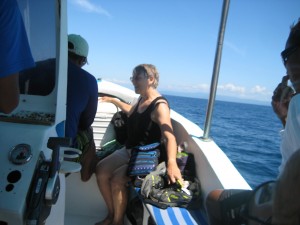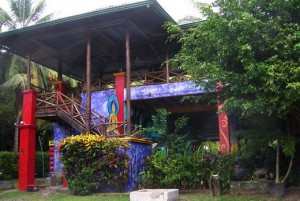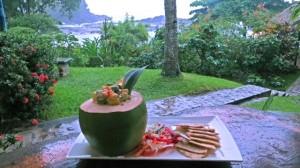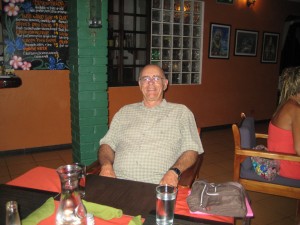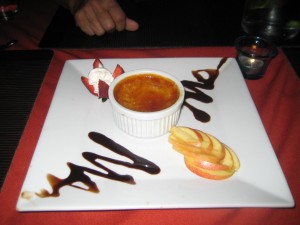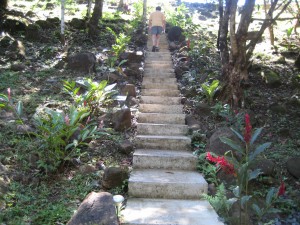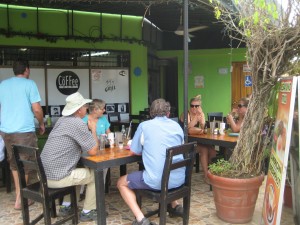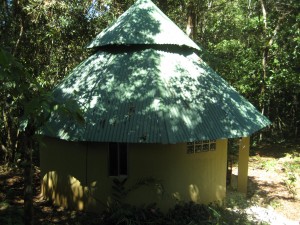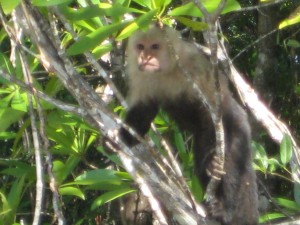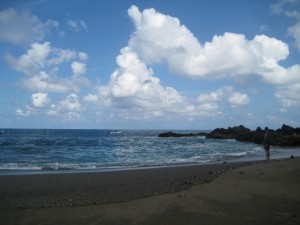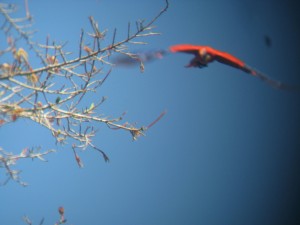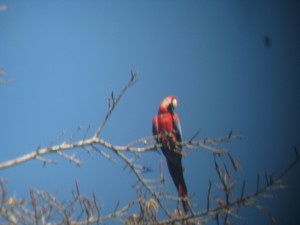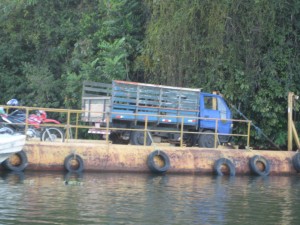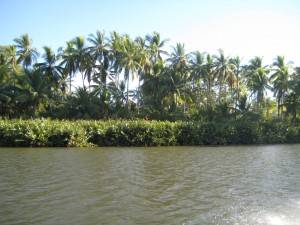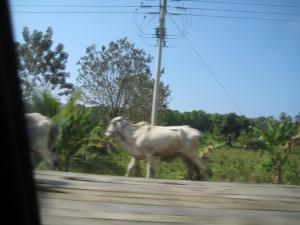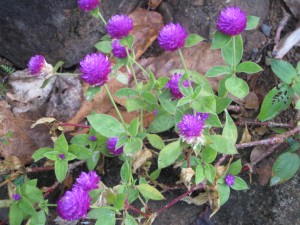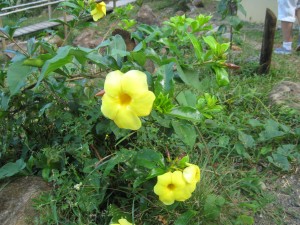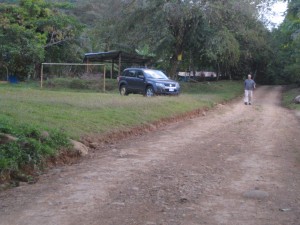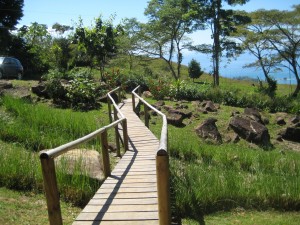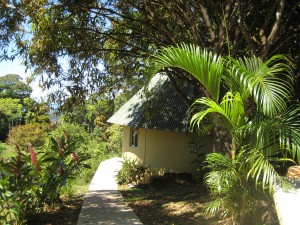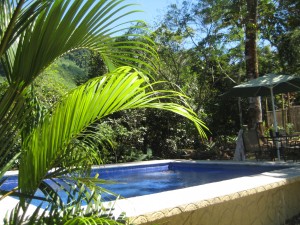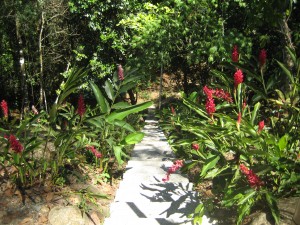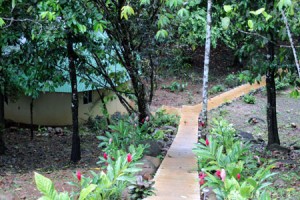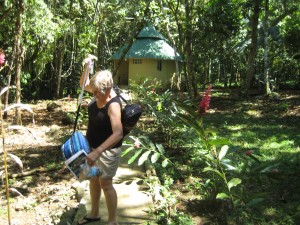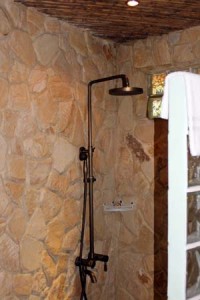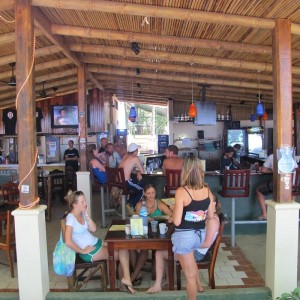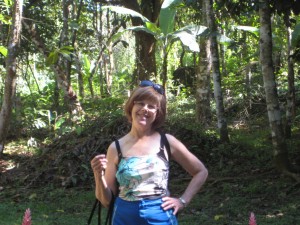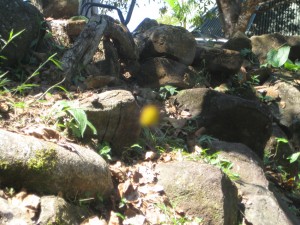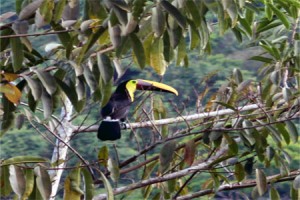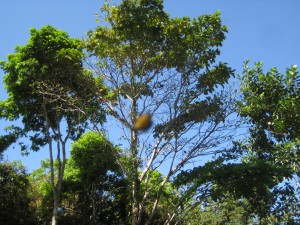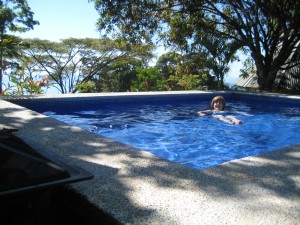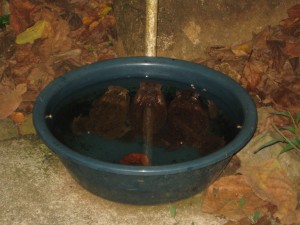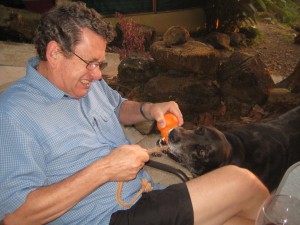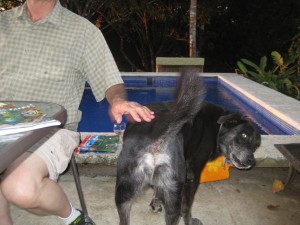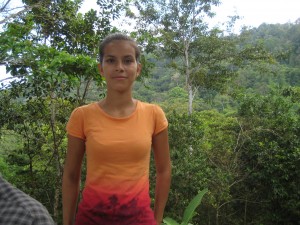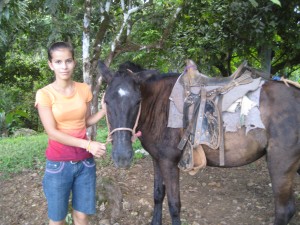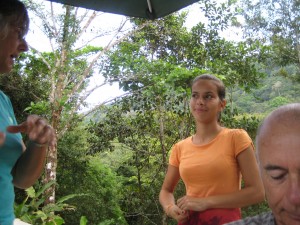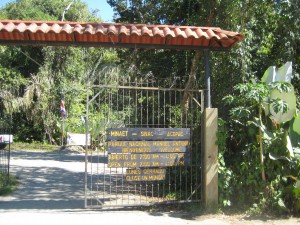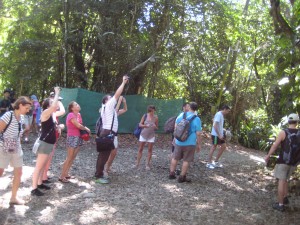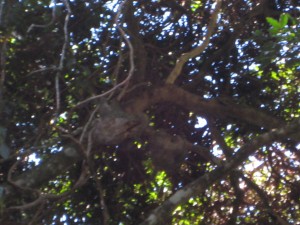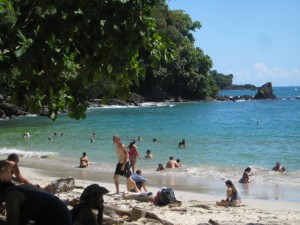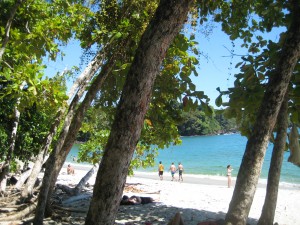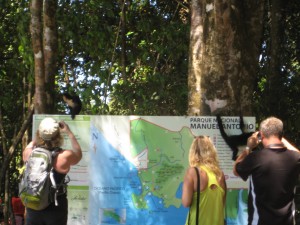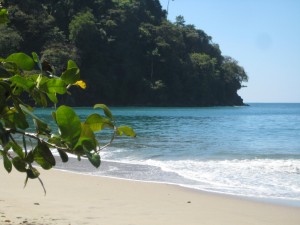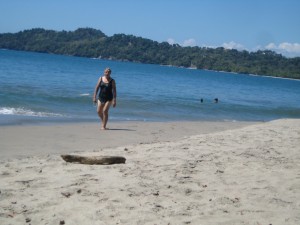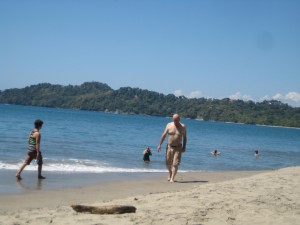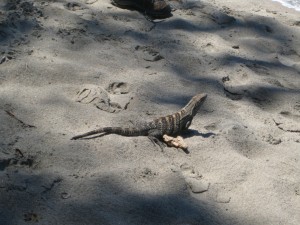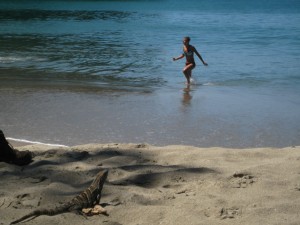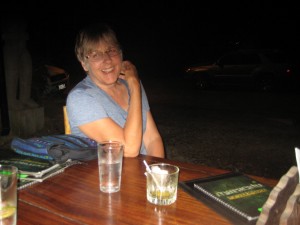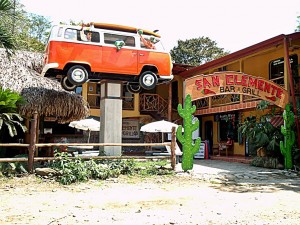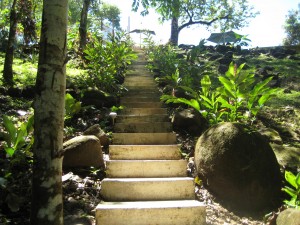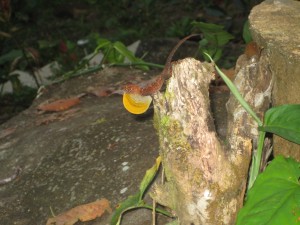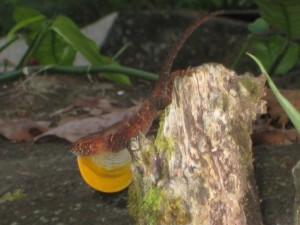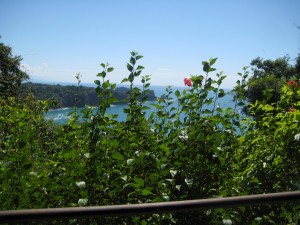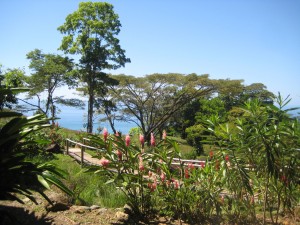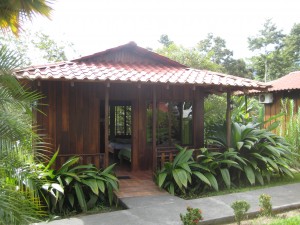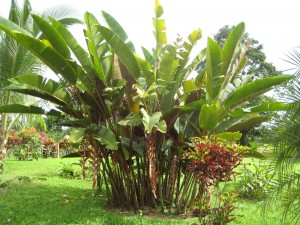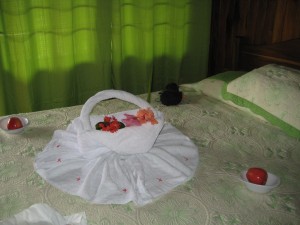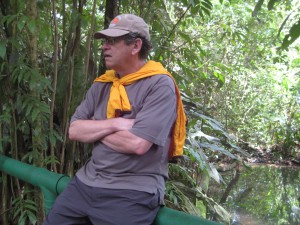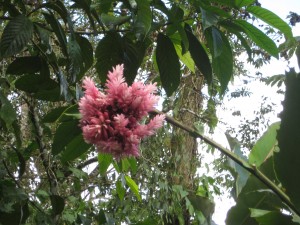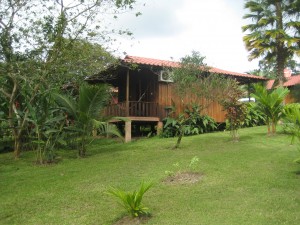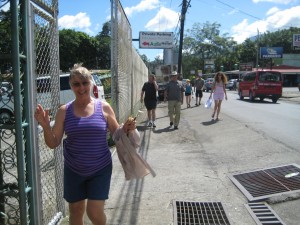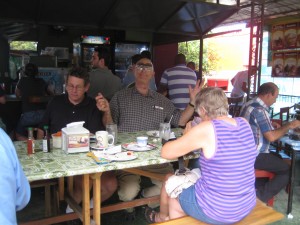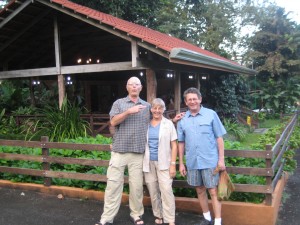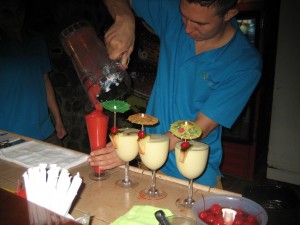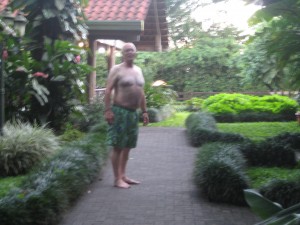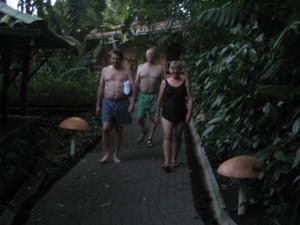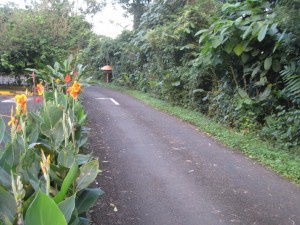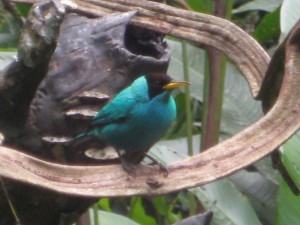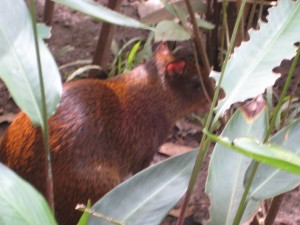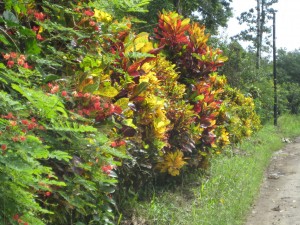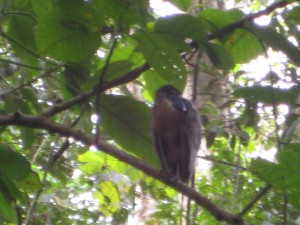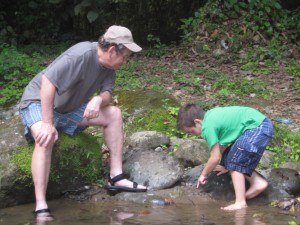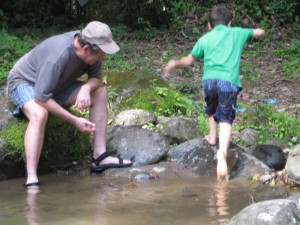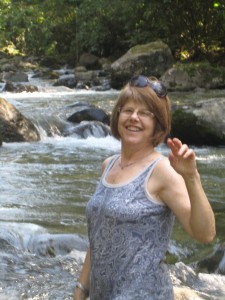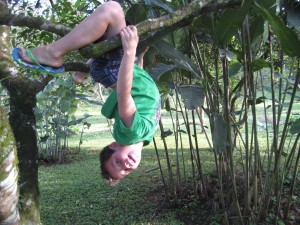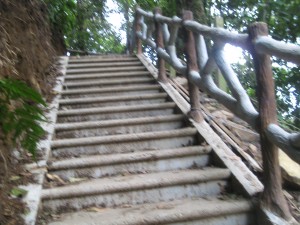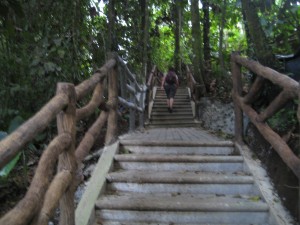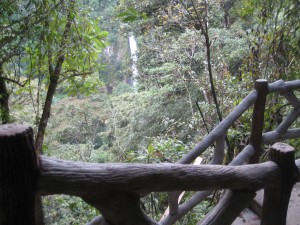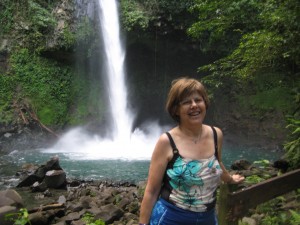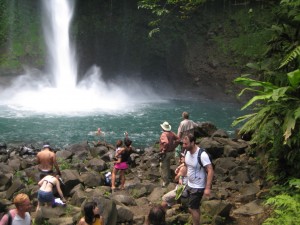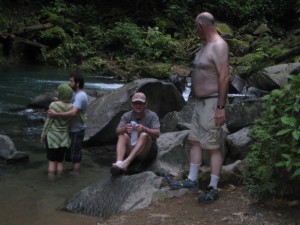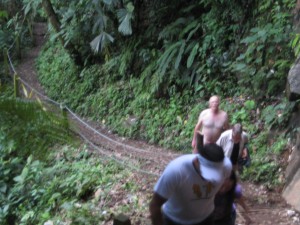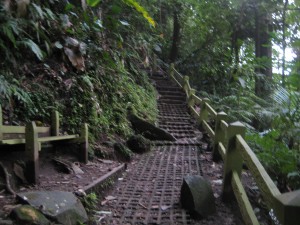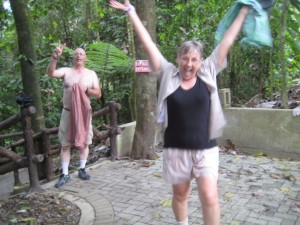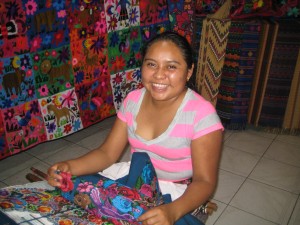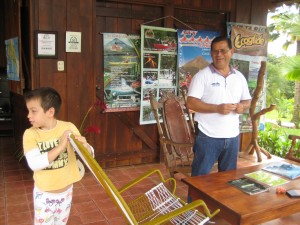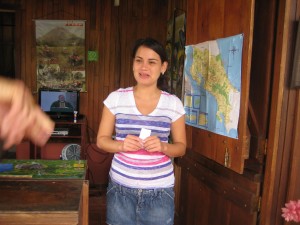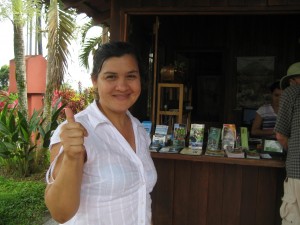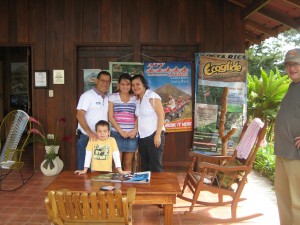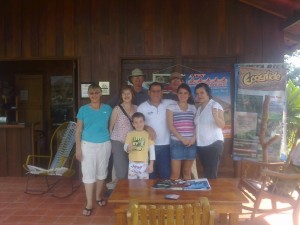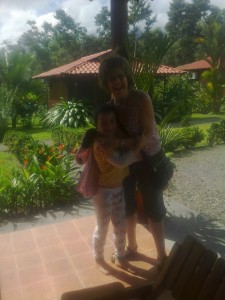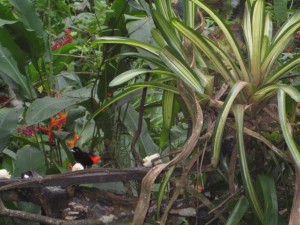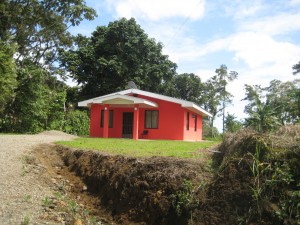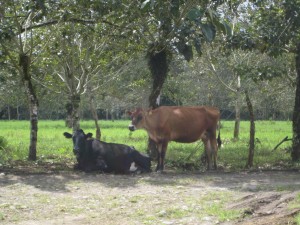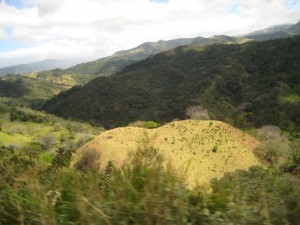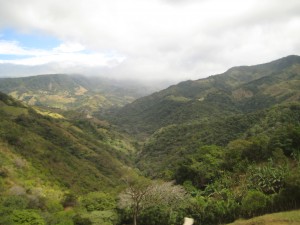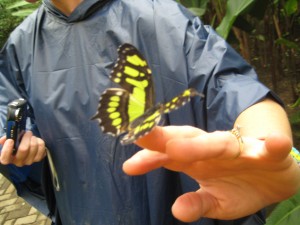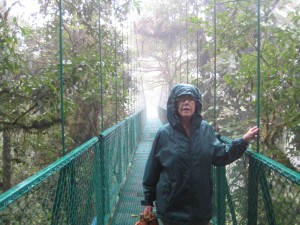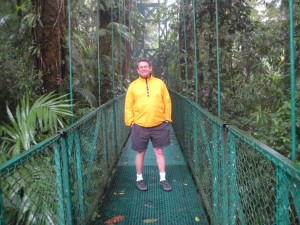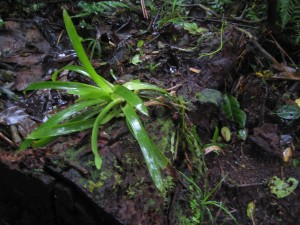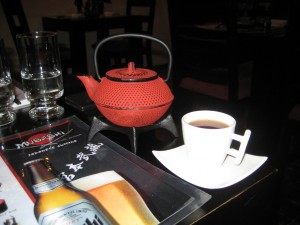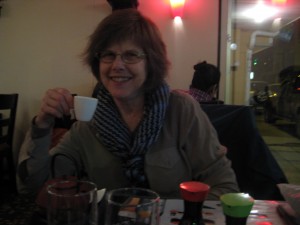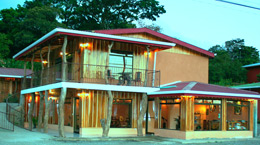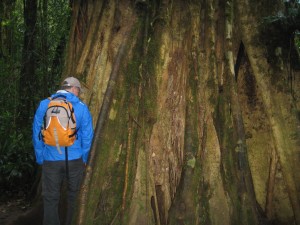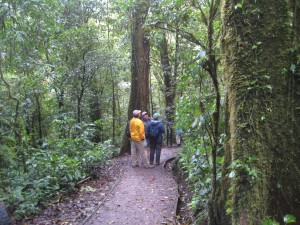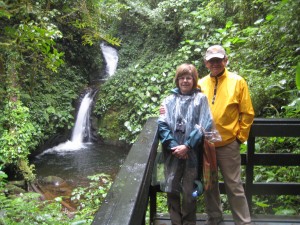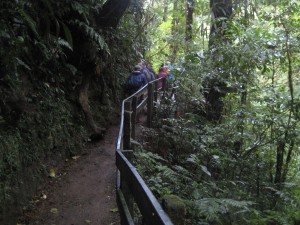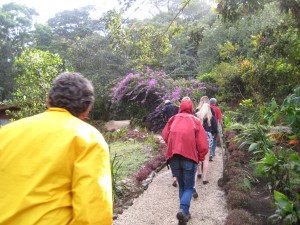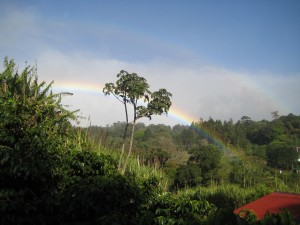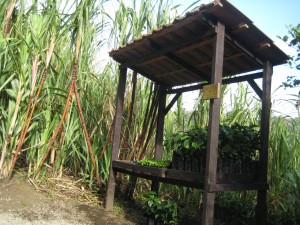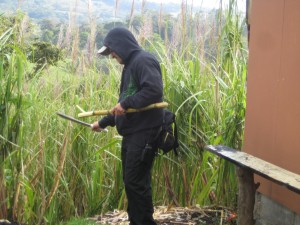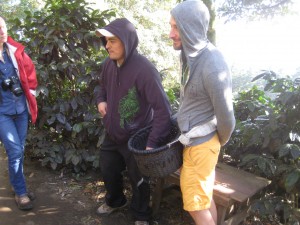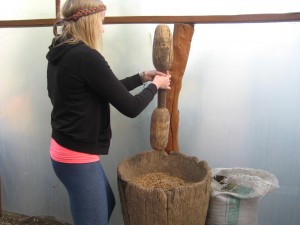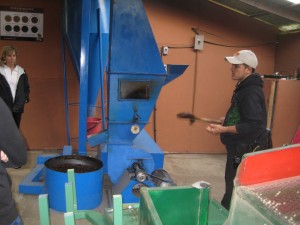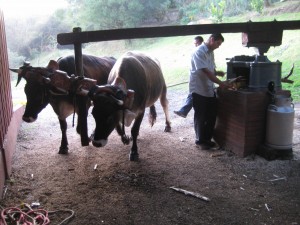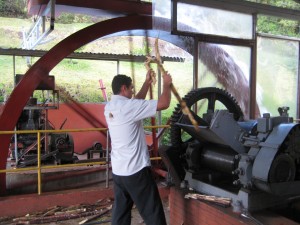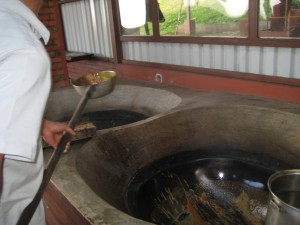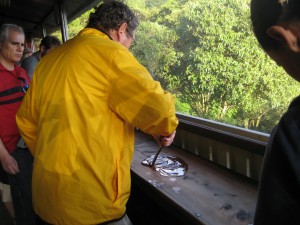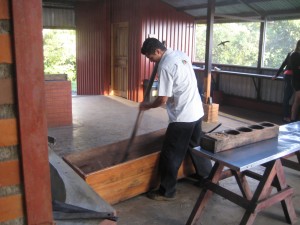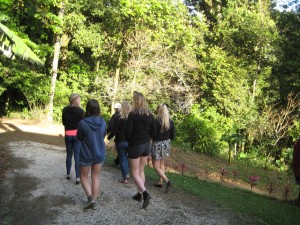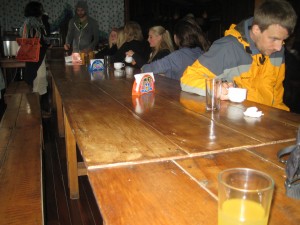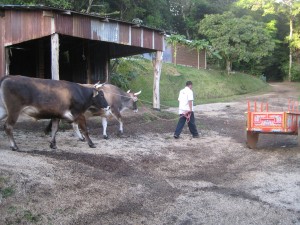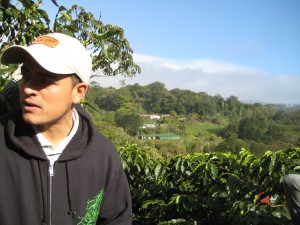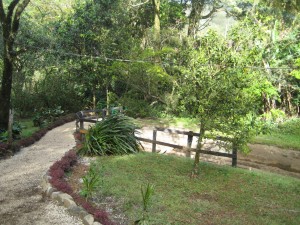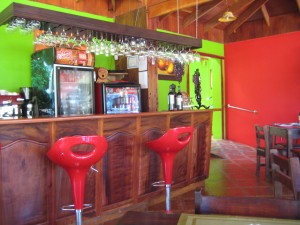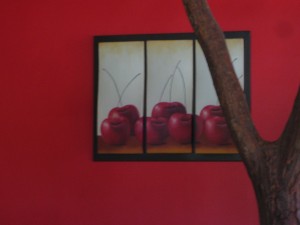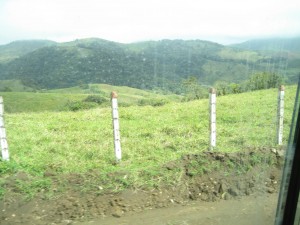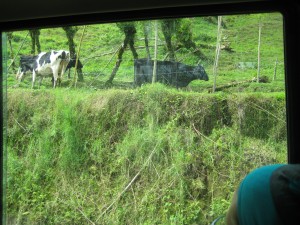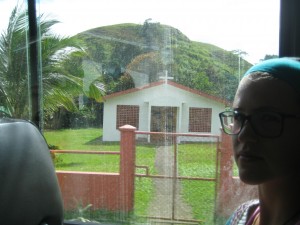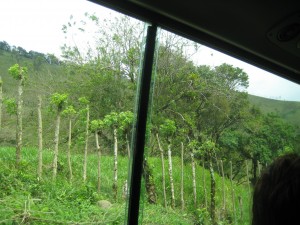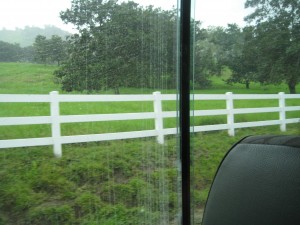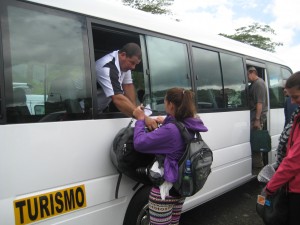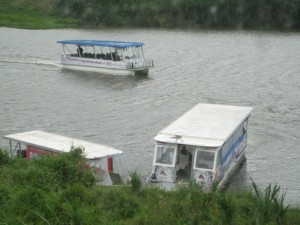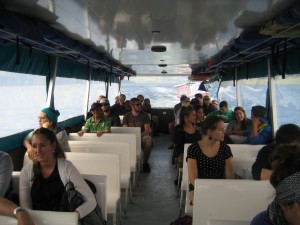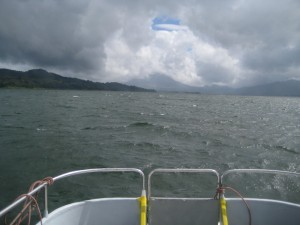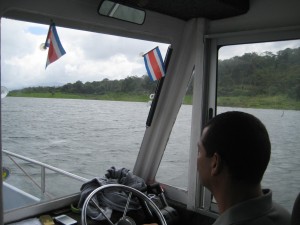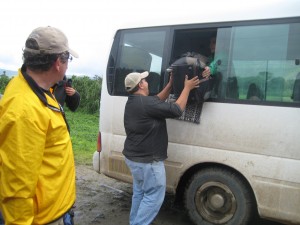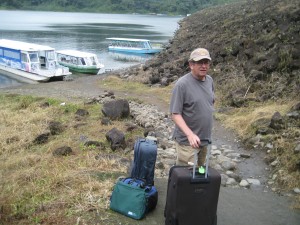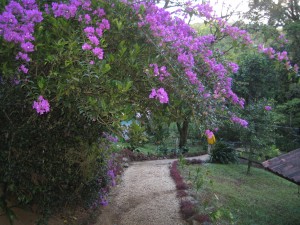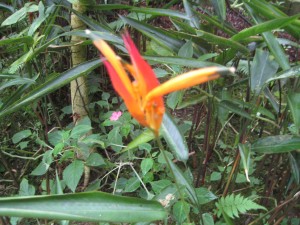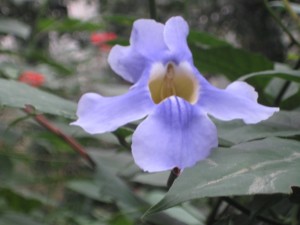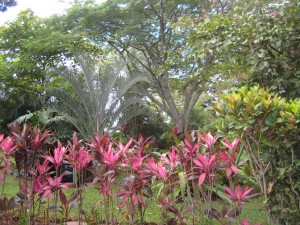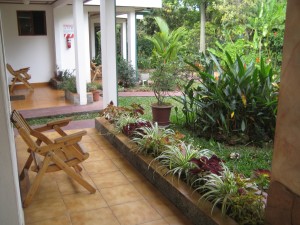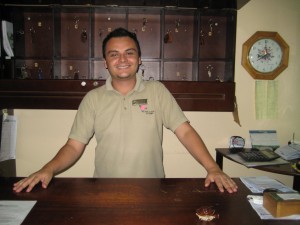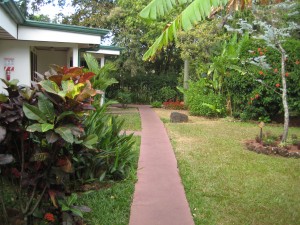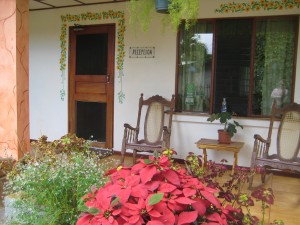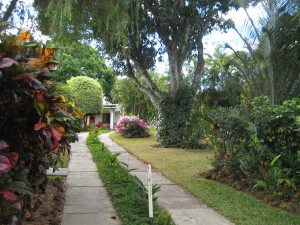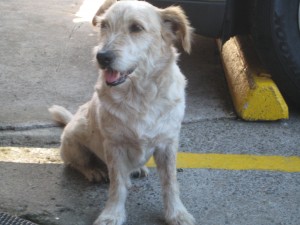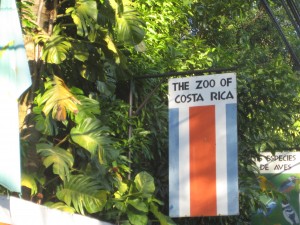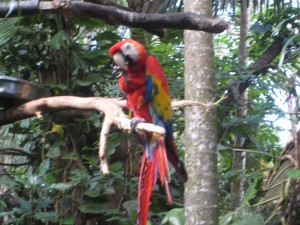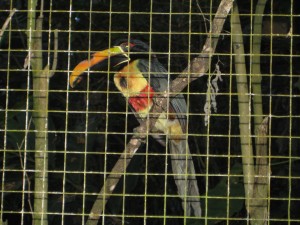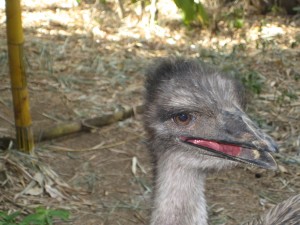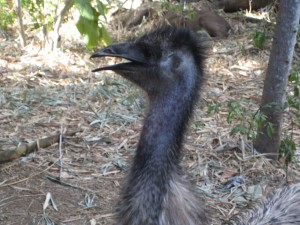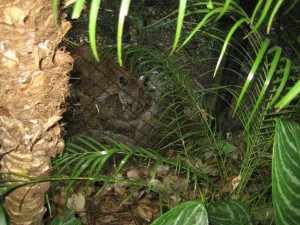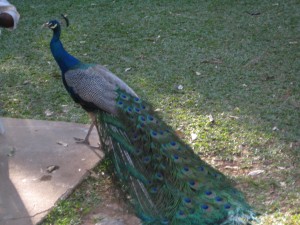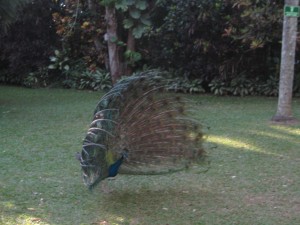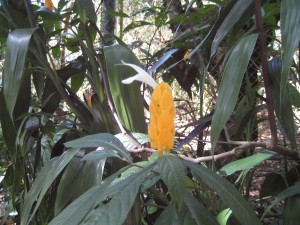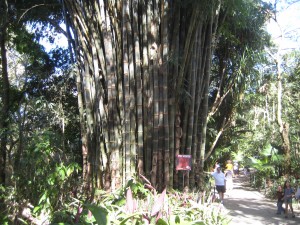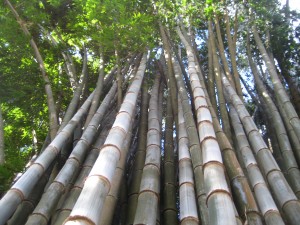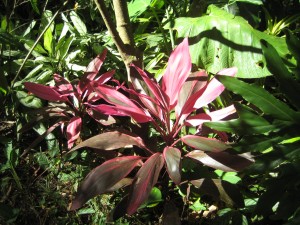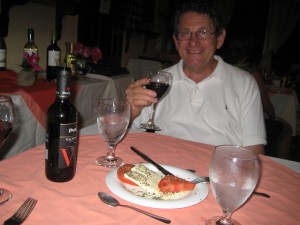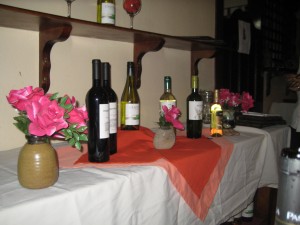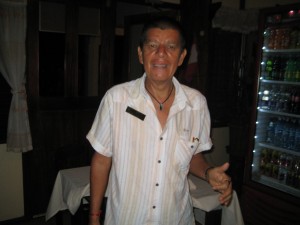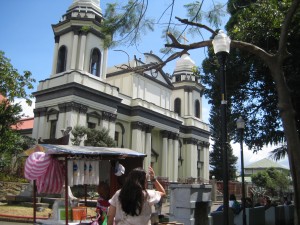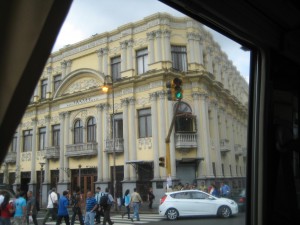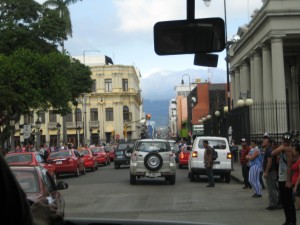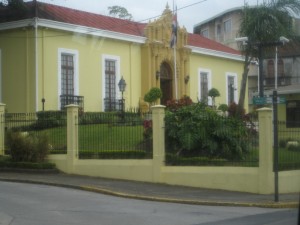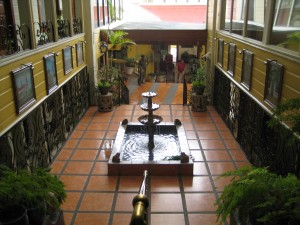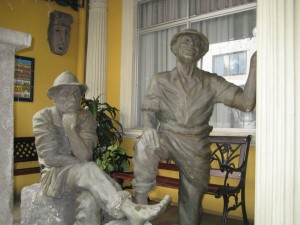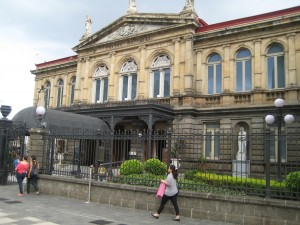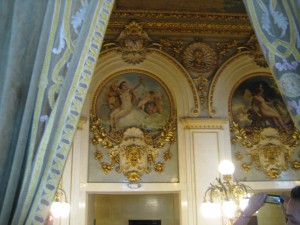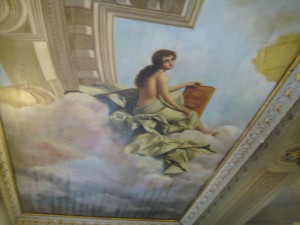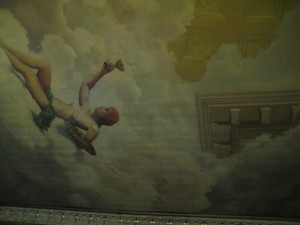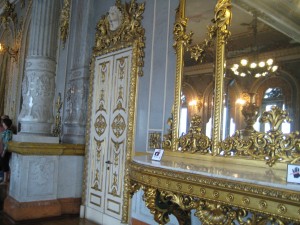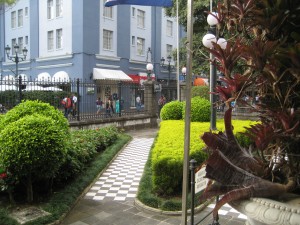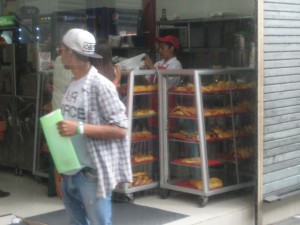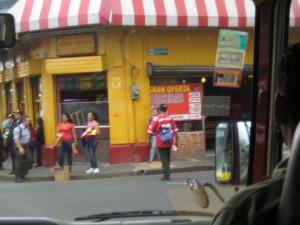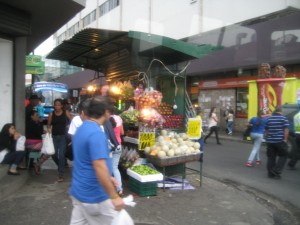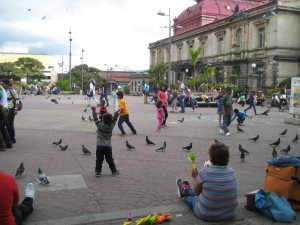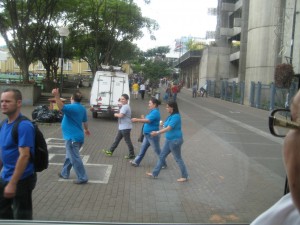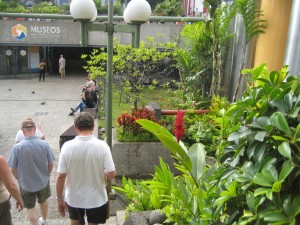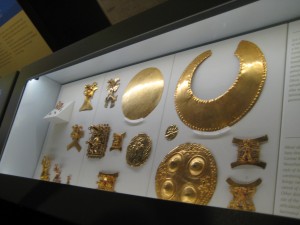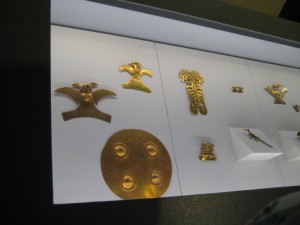SIERPE
We arose early for our one-hour drive to Sierpe, driving past plantations of date palms, green fields, small homesteads, grazing Brahma cows, plots of land growing crops, Ticos bicycling. It was a sunny, humid morning and we arrived at an outdoor restaurant where travelers were gathering. Our guide was busy gathering signatures and organizing our tour. We were joined by various travelers in our boat heading down the Sierpe River through the mangrove swamps and out to the Pacific Ocean to Cano Island.
What amazes me is how a group of folks can become positively giddy at the sighting of an animal in the wild, all gathering at the rails peering for a look, hoping to catch a glimpse, straining and running from this position to that trying to see. Our boat driver was a local Tico who spoke no English but grabbed my camera twice to take photos of the elusive animals I was unable to spot but he was able to photo.
On our particular trip, we sighted a crocodile, a sloth (I personally never could see the slow-moving sloth), monkeys, scarlet Macaws, a boa (curled up in a ball on a tree limb about which there was much discussion on how the guide was able to sight the snake as we flew past in our boat), some dolphins, and various birds.
We learned about the mangroves and our guide was able to pull a seed pod off a mangrove tree to show us how the mangroves reproduce. A side trip down one of the mangrove canals felt mysterious as we floated along under the dense growth through the pea green opaque water, with roots hanging from the trees wondering what lay beneath the surface of the water, or deep in the mangrove forest, with only our imagination to guide us. It was eerily quiet with occasional bird calls.
The result of the boat ride was to eventually arrive at a small island off the coast called Cano Island. The Tour Guide asked who was NOT snorkeling and I asked where were the changing rooms. Apparently I missed the announcement that if you were snorkeling to have your suit on before leaving the dock. So two of us were dropped on the beach, which means the boat gets as close to shore as it can and you make a jump for it and run before the waves soak you and your belongings.
My companion, Marena, was a dark-skinned woman who spoke English but was distant and aloof. Marena left me sitting on her pareo as she walked the beach. There were lots of sand crabs crawling across the sand, hastening my decision to sit and enjoy being on an island in the sun and surf and observing all the boats dropping and picking up passengers. Little did I realize that sand fleas were busy finding places to bite me all over.
The rest of our group, including Bill, Chris and Dave, were dropped in the Pacific for snorkeling.
There is something about sun and surf that relaxes and refreshes. I lay under the palm trees watching the fronds wave patterns in the air, delicate green fans gently rising and falling. I smelled the ocean and dug my feet in the sand. I watched swimmers struggle with the surf and bob up and down in the ocean. Before long the snorkelers returned to the beach.
Bill woke up that morning with a headache and stomach ache and looked peaked. Since there were no restrooms on Cano Island, Bill took to the ocean to relieve himself. Bill emerged from the surf rubbing the salt in his eyes when I saw a big wave heading his way and no way to warn him. Before I knew it, Bill was rolling head over heels in the waves, tumbling like a piece of driftwood caught in the waves. When he finally got his footing, he staggered up the beach towards me like a drunken sailor. Bills snorkeling included getting separated from his group in the wide, wide ocean, using a lot of energy to reconnect by swimming a long distance, and up chucking in snorkeling gear, the “tourista” bug attacking full force.
Then as we attempted to get back on our boat, a wave pushed the boat sideway with a lurch, again almost knocking Bill over. It was not the best day for Bill. Never one to give up, Bill gave it his best shot despite feeling sick.
We lunched under the palm trees and had a great time spotting some scarlet macaws and chasing them to get a better view. It was a carefree day.
The boat ride home took a good part of the afternoon skimming the Sierpe River.
Since Dave was our only automobile driver, he had the responsibility of driving us back to our lodging in the rainforest, with Bill as his copilot. Many Ticos were out on their bicycles this afternoon, pedaling on the sides of the narrow, two-lane road, a picturesque scene, and the plantations of palms stretched for miles. We dined at Por Que No? on an outside deck, with fresh food and an engaging, friendly waiter and superior Piña Coladas overlooking the beach in Dominicalito. Chris ordered the coconut Ceviche and licked the coconut clean. I think she liked it.
The next morning we packed and dragged the luggage up the 71 steps for our drive back to Alajuela.
Bill spent the night with a bad case of diarrhea and was so miserable he was ready for home. Bill was back in the co-pilot seat with Dave at the wheel. A stop in Jaco for lunch on Costa Rican Time took forever to get our food and check, at least 90 minutes or more.
Playa de Jaco is the central Pacific’s party town, with tons of bars and discos, and looked like a fun town for adventure.
How we ever found our hotel in Alajuela that afternoon is a mystery, as we took more twists and turns than one can imagine but somehow there it was, right in front of us at last, Pura Vida. Once inside the gate and behind the walls, we were delighted with gardens and our two-bedroom casita with a big, open patio and outdoor kitchen. We fixed beans and tortillas with our remaining fruit and fresh tomatoes. Bed time was early. By now everyone was feeling overwhelmed, tired, recovering from tourista and sand flea bites and revelie was at 4:30 am. Our hosts had breakfast waiting and packed, yogurt, fresh fruit, juice and granola bars. My fresh fruit and orange juice made it through security–the girls were talking so much they didn’t pay attention. Bills orange juice got confiscated. Go figure. We were settled in to our Delta flightand on our way home by 8 a.m.
It’s going to take me awhile to sort out the best and worst moments of this vacation, but one thing is for sure, it was an adventure not to be missed. “Pura Vida”
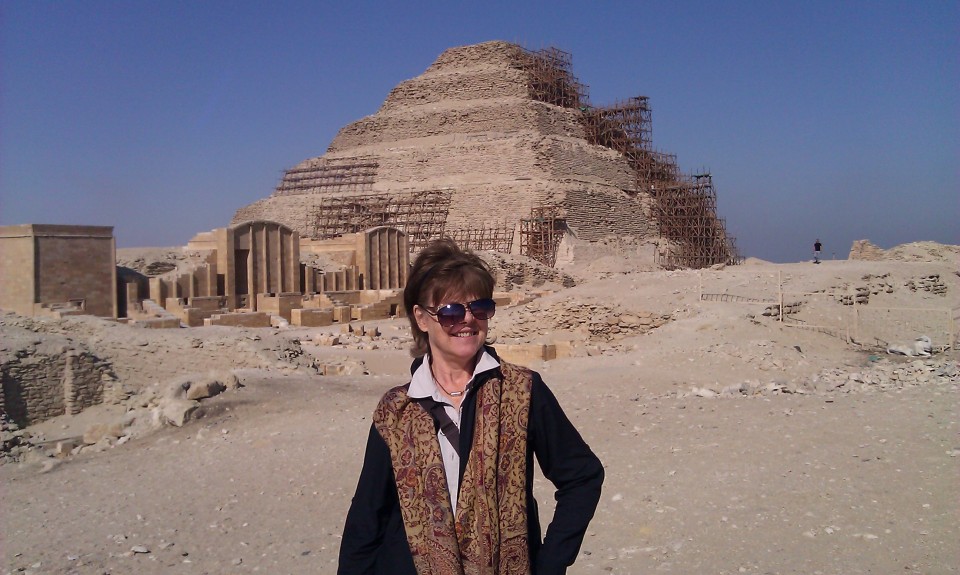
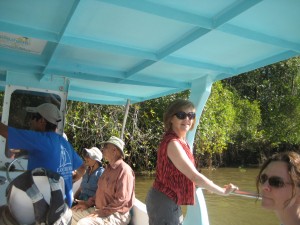
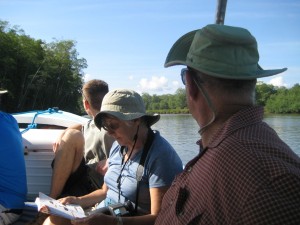
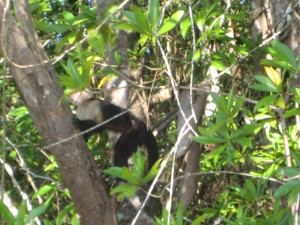
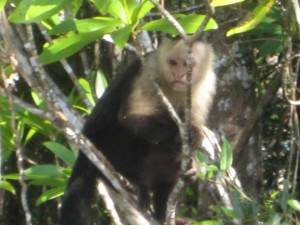
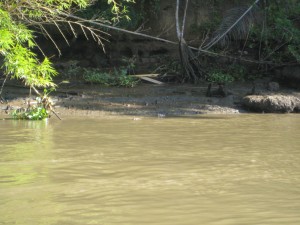
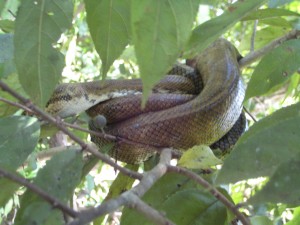
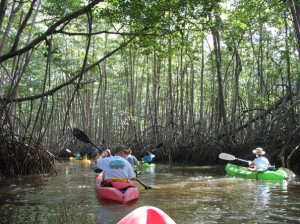
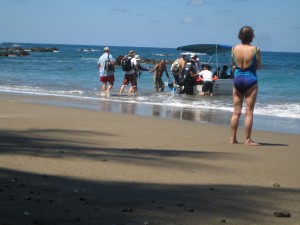
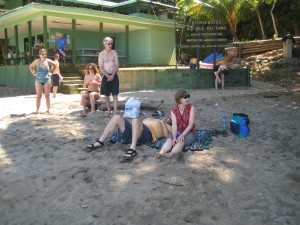
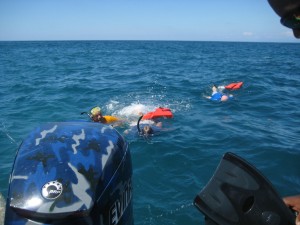
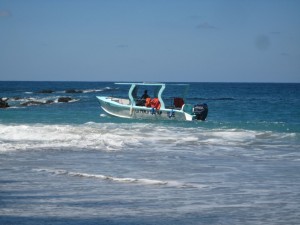
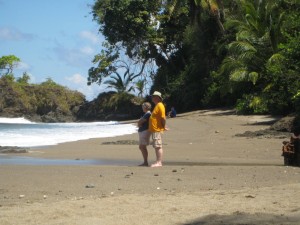
![Chris and I find a toilet on Cano Island [there are none]](http://travelwithconnie.com/wp-content/uploads/2014/02/IMG_7270-300x225.jpg)
